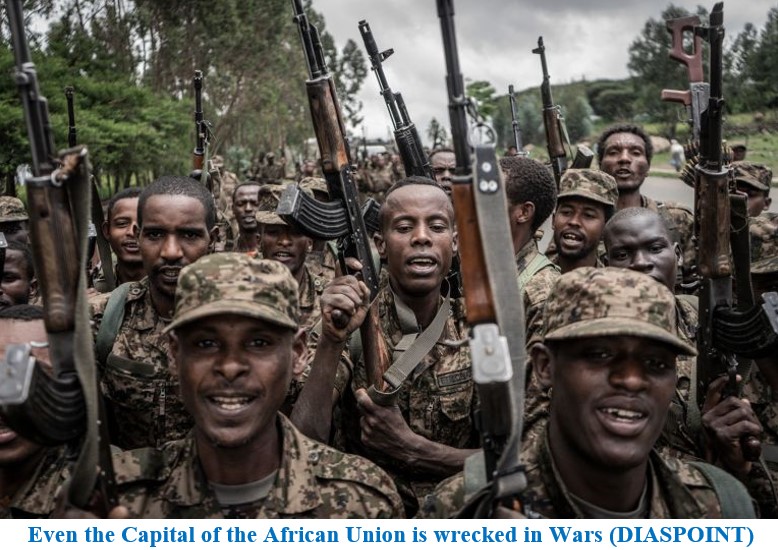Another War Breaks Out In Northern Ethiopia, As Threat Of Disintegration Looms
Post By Diaspoint | September 9, 2023

“The worst-case scenario is unfolding in Ethiopia,” Gabriel Bizuneh tells me, as he organizes in the Ethiopian community in Washington, D.C. Once again, the federal government is at war with another region in a federal system where regions are demarcated on ethnic lines. Moreover, each region in Ethiopia has its own police force, special units, and local militia.
This time, the federal government is at war with the Fano and Amhara special forces, which fought against the Tigray People’s Liberation Front (TPLF) and have been protecting civilians from the Oromo Liberation Army (OLA)/ ONEG Shene attacks. “We have been pleading for so long for this conflict not to escalate further,” Bizuneh adds, “but Henry Kissinger’s policy of dismantling Ethiopia based on ethnicity, which the TPLF was an anchor for, remains in place.”
The U.S. State Department supported TPLF, which recrafted the state on ethnic lines and is hostile toward the Amhara, who are a dominant ethnic group in Ethiopia. The Amhara dominance is deeply linked with the rule of Emperor Menelik, who was able to consolidate the modern state by expanding its borders in the south. Identity and culture are complex and evolving, but a colonial and Eurocentric interpretation of rigid identities that shaped the labor process, and controlled the natural resources and wealth, was effective in fermenting enmity and divisions. In Ethiopia, “the seeds of genocide” were sown by Italy, which after its decisive defeat in the 1896 Battle of Adwa (by a united front led by Menelik II and Empress Taytu), introduced the idea of Ethiopia as a case of African colonialism.
While TPLF has been an effective tool to deepen this ethnic division, Kissinger can be credited as the originator of the State Department policy to support this agenda. Kissinger had identified Amhara as a dominant group (informed by analysis gathered from scholars such as Levine). He drew on an ethnic lens to interpret (or more accurately misinterpret) “[I]ndigenous political change” that resulted in the Dergue, the ruling military junta, turning sharply toward the USSR. Within Cold War geopolitics, Ethiopia had been receiving military aid from the United States (even after Emperor Haile Selassie’s overthrow) until the Carter administration’s strategic deployment of human rights to advance U.S. interests converged with Ethiopia’s Red Terror, and led to the emergence of the Soviet-leaning faction as the dominant force in the Dergue.
Read More from original source
